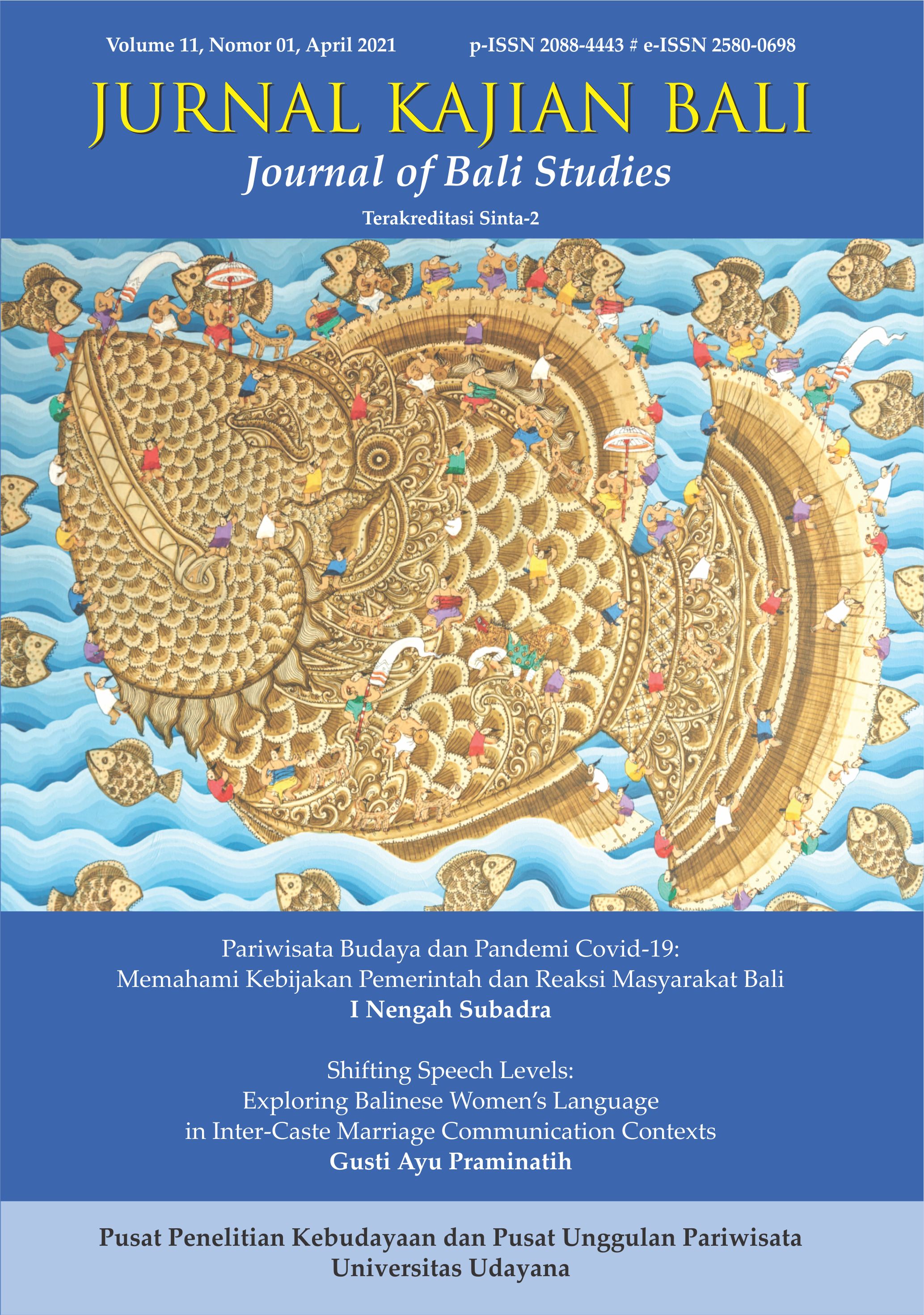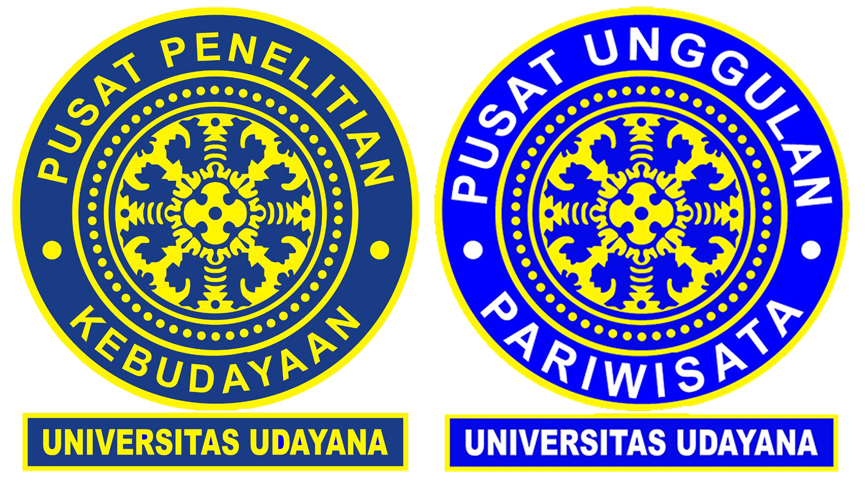Bentuk dan Makna Pertunjukan Tari Renteng di Desa Saren, Nusa Penida, Klungkung, Bali
Abstract
This article discusses the meaning of Renteng Dance in the Saren Village of Nusa Penida. In Bali, there are many ceremonial dances, but recently many people have created ceremonial dances inspired by the Renteng Dance. This study focuses on the forms and meanings of the Renteng Dance shown in Saren Village. Data collected through observation, documentation study, and interviews with informants were analyzed descriptively using aesthetic theory and reception. It can be concluded that the people of Saren Village performed the Renteng Dance in the form of tari lepas which is a dance performance without stories. This can be seen from the presentation, choreography, and the music accompanying the performance. Renteng dance is accompanied by Balinese gamelan Balaganjur music with a specific movement dance performance structure. Saren community members support this dance because it has meaning as an expression of faith, social concern, and the interest in ecological preservation.
Downloads
References
Atmaja, Gede Marhaendra Wija, Ida Ayu Komang Arniati, Gede Yoga Kharisma Pradana. (2019). “Implications of The Enacment of Law Number 6 of 2014 on The Position of Villages in Bali, Indonesia”. Asia Life Sciences, Vol. 28, No. 2, pp. 295-310.
Dharmika, Ida Bagus, Gede Yoga Kharisma Pradana, Ni Made Ruastiti. (2020). “Forest Conservation With The Basis Of Customary Village and Religion Rules in Bali”. International Journal of Advanced Science and Technology, Vol. 29, No.8, pp. 571-579.
Dharmika, Ida Bagus, Gede Yoga Kharisma Pradana. (2020). “The Meaning of The Sutri Dance in Dewa Yadnya in Era to The Digital Era to The People of Pakraman Lebih Village, Gianyar Bali”. International Journal of Advanced Science and Technology, Vol. 14, no.5: pp. 647-665.
Dharmika, Ida Bagus, Ni Made Ruastiti, Gede Yoga Kharisma Pradana. (2020). “Forest Conservation with the Basis of Customary Village and Religion Rules in Bali”. International Journal of Advanced Science and Technology, Vol. 29, No.8: pp. 571-579.
Diastini, Ida Ayu. (2018). Viralnya Tari Rejang Renteng. Makalah seminar Tari Rejang Renteng. Denpasar: Dinas Kebudayaan Provinsi Bali.
Haugen, David M., Rachael Mach. (2010). Globalization. Detroit : Greenhaven Press.
Indrayuda. (2020). “The Meaning of Education in Mabuang Anda Performance in New Normal”. PalArch’s Journal of Archaeology of Egypt/Egyptology, 17(8): 267-285.
Freeman, Damien. (2014). Art”Emotions : Ethics, Expression and Aesthetic Experience. London: Routledge.
Indrawan, Anak Agung, Ni Made Ruastiti, I Ketut Sariada. (2020). Makna Pertunjukan Tari Renteng di Desa Saren, Nusa Penida, Klungkung, Bali. Prosiding Webinar Geliat Seni Budaya Nusantara Pada Era Pandemi Covid 19. Jayapura: ISBI Tanah Papua Press.
Koentjaraningrat. (1987). Sejarah Teori Antropologi I. Jakarta : Universitas Indonesia.
Koentjaraningrat. (2002). Pengantar antropologi II. Jakarta: Rineka Cipta.
Manns, James W. (2015). Aesthetics. Abdingdon, Oxon: Routledge.
Mulyati, Ni Nyoman. (2002). Tari Rejang Kuning di Desa Adat Asak Karangasem Bali (Tesis). Yogyakarta: Institut Seni Indonesia Yogyakarta.
Pateda, Mansoer. (2001). Semantik Leksikal. Jakarta : Rineka Cipta.
Pitana, I Gde. (2020). “Modernisasi dan Transformasi Kembali ke Tradisi : Fenomena Ngaben di Krematorium bagi Masyarakat Hindu di Bali”. Jurnal Kajian Bali, Vol. 10, No.2, pp. 351-374.
Pudja, I Gede, Sudharta, Tjokorda Rai. (2004). Manawa Dharmasastra. Surabaya: Paramita.
Rai S, I Wayan, I Gusti Made Sunartha, Ida Ayu Made Purnamaningsih, Ni Made Ruastiti, Yunus Wafom. (2020). “The Meaning Of Pura Agung Surya Bhuvana (PASB) In The Religious Life In Jayapura In The Global Era”. Humaniora, Vol.11, No. 1, pp. 57-67.
Rai S., I Wayan, I Gusti Made Sunartha, Ida Ayu Made Purnamaningsih, Ni Made Ruastiti, Yunus Wafom. (2020). “Bali Diaspora di Jayapura: Makna Pura Agung Surya Bhuvana Dalam Membangun Kerukunan Umat di Tanah Papua. Jurnal Kajian Bali”, Jurnal Kajian Bali, Vol. 10, No.1, pp. 1-24.
Rai S., I Wayan, Made Gde Indra Sadguna, I Gde Agus Jaya Sadguna, Gede Yoga Kharisma Pradana. (2019). “Tifa From The Land of Papua: Text and Context”. Asia Life Sciences, Vol. 28, No. 2, No. 335-354.
Richard T. Schefer. (1989). Sociology: A Brief Introduction. New York: Mc Graw-Hill.
Rostiyati, ANI. (1994). Fungsi Upacara Tradisional Bagi Masyarakat Pendukungnya Masa Kini. Yogyakarta: Depdikbud.
Ruastiti, Ni Made. (2019). “Deconstructing Ideologies Behind Rodat Dance in Kepaon Village, Bali, Indonesia in The Global Era”. Asia Life Sciences, Vol. 28, No.1, pp. 17-29.
Ruastiti, Ni Made, I Komang Sudirga, I Gede Yudarta. (2020). “Aesthetic Performance of Wayang Wong Millennial”. International Journal of Innovation, Creativity and Change, Vol. 13, No.7, pp. 678-692.
Ruastiti, Ni Made. I Komang Sudirga, I Gede Yudarta. (2020a). “Model of Innovative Wayang Wong for Millenial Generation to Meet 4.0 Industrial Revolution Era in Bali”. Journal of Environmental Treatment Techniques. Vol. 3, No. 8, pp. 999-1004.
Ruspawati, Ida Ayu Wimba, Ni Made Ruastiti. (2019). “The Meaning Of The Performance Of Rejang Tegak Dance For The People Of Busungbiu Village, Buleleng, Bali In The Global Era”. Asia Life Sciences, Vol. 28, No.2, pp. 255-280.
Sedyawati, Edi. (1981). Pertumbuhan Seni Pertunjukan. Jakarta : Sinar Harapan.
Sedyawati, Edy. (2006). Budaya Indonesia (Kajian Arkeologi, Seni, dan Sejarah). Jakarta : PT. Raja Grafindo Persada.
Sudarsana, Ida Bagus Putu. (2001). Ajaran Agama Hindu (Dharmaning Paebatan) Dharma Caruban. Denpasar: Yayasan Dharma Acharya.
Swandi, I Wayan, Arya Pageh Wibawa, Gede Yoga Kharisma Pradana, I Nyoman Suarka. (2020). “The Digital Comic Tantri Kamandaka : A Discovery For National Character Education”. International Journal of Innovation, Creativity and Change, Vol. 13, No. 3, pp. 718-732.
Tejayadi, Putu Windhu, I Nengah Laba, Gede Yoga Kharisma Pradana. (2019). “The Effect of Organizational Culture on Employee Satisfaction in Mercure Resort Sanur Bali Hotel”, The International Journal of Green Tourism Research and Applications, Vol. 1, No. 1, pp. 63-72.
Waters, Malcolm. (2009). Globalization. London: Routledge.
Willis, Ika. (2018). Reception. New York: Routledge.

This work is licensed under a Creative Commons Attribution 4.0 International License.



















